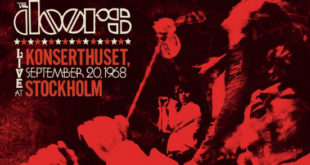History documentaries seem to take one of two approaches. One is linear, providing the viewer with a relatively straight line course from the origins through the ultimate ramifications of the subject. The other is a more subtle approach, focusing on various aspects of the theme and conveying its overall meaning and impact through those topics.
World War 1 – American Legacy is undoubtedly in the second camp. In fact, it summarizes virtually the entire linear history of "The Great War" in about 21 minutes. The remaining hour and a half focuses on a variety of Americans and their participation in the war, using them as the vehicle by which to explore the impact of American involvement in the war, both then and now.
Like the participation of Americans in the war, the documentary is not limited to the time period of the U.S. government's military involvement in the conflict. Instead, the documentary looks at those who, for one reason or another, joined the Allied effort before the U.S. formally did so in April 1917. Thus, we learn of Alan Seeger, a Harvard graduate and bohemian poet who fell in love with Paris and joined the French Foreign Legion to fight for France. He would die in action, whether ironically or fittingly, on July 4, 1916. Seeger's legacy? The posthumously published poem, "I Have a Rendezvous with Death," which serves not only to commemorate the swath of death in the "War to End All Wars" and subsequent wars, but also as a partial theme of the documentary.
World War 1 – American Legacy shows Seeger was not the only Ivy League graduate or artist to jump into the fray earlier than his country. Victor Chapman, a Harvard graduate who went on to study architecture in Paris, also joined the French Foreign Legion at the beginning of the war. He later became one of the first members of the Lafayette Escadrille, a group of American pilots under French command, and the first American pilot to die in the war.
The documentary blends his story with that of Quentin Roosevelt, the son of President Teddy Roosevelt, to tell two of the legacies of American participation in the war. Roosevelt was a fighter pilot killed in action following America's entry in the war. His story and Chapman's help explain the growth and development of aircraft as weapons of war. They, like Seeger, also demonstrate that class status played no role in the volunteerism of this war. Instead, the volunteers cut across class structure and the privileged were amongst the first who signed up. The documentary also looks at the participation of writers such as Joyce Kilmer, Ernest Hemingway, and poet e.e. cummings.
It is through such individual and group stories that the documentary explores its various themes. The role of women as nurses and communications specialists helps lay the groundwork for a legacy of changing aspects of the role of women in society. Not only was this a sharp break from traditional roles for women, it would serve as one of the vanguards for increased acceptance of how women would participate in American society.
Likewise, World War 1 was a beginning, albeit small, step toward some concepts of racial equality. Although relegated to essentially supply and labor jobs by the U.S. military, the French had no qualms about using African American military units. As a result, the first African American unit in the war, the 369th Infantry Regiment, was assigned to the French Army. Also known as the Harlem Hell Fighters, the unit would not only see more combat action than any other American unit, it would become the most highly decorated American regiment of the war, regardless of race. Yet despite its achievements, after being feted as part of a New York City victory parade following the war, its members would still struggle with racism upon their return home.
The Hell Fighters also created a different American legacy in Europe. James Reese Europe was designated to create and lead a jazz band for the unit. That band's performances for French audiences would create a love for jazz — a uniquely American art form — in that country and Europe that lasts to this day.
Director Mark Bussler explores these and other American legacies of the war with period music, artwork and photographs, including admittedly "disconcerting" photos of casualties. All of this is necessary for true context, as the narration by David Carradine makes clear.
While generally well done, the documentary and DVD each lack in certain respects. Although the documentary hints at the significance of its themes, it does not take them much beyond the narrow focus of the war itself other than to indicate they would ultimately affect American and European life. Meanwhile, although the DVD comes in Dolby 5.1 Surround Sound, it has no additional features, whether commentary, interviews or exploration of the artwork or music of the war. Yet these flaws are relatively minor and perhaps should be expected. It is impossible for any non-serial documentary to explore the war and its ramifications in infinite detail. In addition, some may well contend that a documentary must stand on its own and should not rely upon additional, outside material to convey its message.
All in all, World War 1 – American Legacy is a worthy addition to the Minutes of History series.
 Blogcritics The critical lens on today's culture & entertainment
Blogcritics The critical lens on today's culture & entertainment



